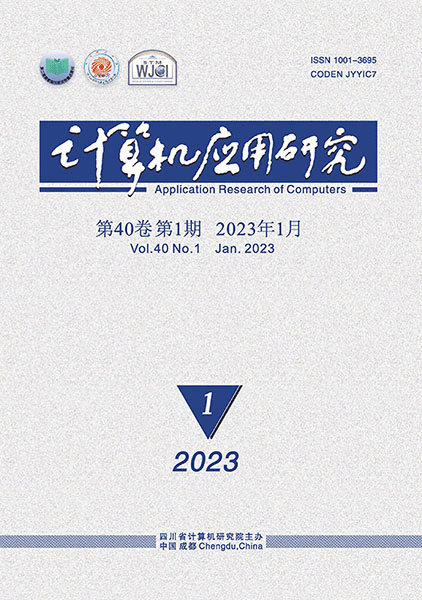面向边缘端设备的轻量化视频异常事件检测方法
Lightweight video abnormal event detection method for edge devices
1. 山东云海国创云计算装备产业创新中心有限公司, 济南 250013
2. 高效能服务器和存储技术国家重点实验室, 济南 250013
3. 齐鲁工业大学(山东省科学院), 济南 250353

摘要
现有基于CNN模型的视频异常事件检测方法在精度不断提升的同时,面临架构复杂、参数庞大、训练冗长等问题,致使硬件算力需求高,难以适配无人机等计算资源有限的边缘端设备。为此,提出一种面向边缘端设备的轻量化异常事件检测方法,旨在平衡检测性能与推理延迟。首先,由原始视频序列提取梯度立方体与光流立方体作为事件表观与运动特征表示;其次,设计改进的小规模PCANet获取梯度立方体对应的高层次分块直方图特征;再次,根据每个局部分块的直方图特征分布情况计算表观异常得分,同时基于内部像素光流幅值累加计算运动异常得分;最后,依据表观与运动异常得分的加权融合值判别异常分块,实现表观与运动异常事件联合检测与定位。在公开数据集UCSD的Ped1与Ped2子集上进行实验验证,该方法的帧层面AUC分别达到86.7%与94.9%,领先大多数对比方法,且参数量明显降低。实验结果表明,该方法在低算力需求下,可以实现较高的异常检测稳定性和准确率,能够有效兼顾检测精度与计算资源,因此适用于低功耗边缘端设备。
基金项目
山东省自然科学基金资助项目(ZR2023QF050)
国家自然科学基金资助项目(62203242)
出版信息
DOI: 10.19734/j.issn.1001-3695.2023.04.0225
出版期卷: 《计算机应用研究》 印刷出版, 2024年第41卷 第1期
所属栏目: 图形图像技术
出版页码: 306-313,320
文章编号: 1001-3695(2024)01-049-0306-08
发布历史
[2023-08-14] 优先出版
[2024-01-05] 印刷出版
引用本文
李南君, 李爽, 李拓, 等. 面向边缘端设备的轻量化视频异常事件检测方法 [J]. 计算机应用研究, 2024, 41 (1): 306-313,320. (Li Nanjun, Li Shuang, Li Tuo, et al. Lightweight video abnormal event detection method for edge devices [J]. Application Research of Computers, 2024, 41 (1): 306-313,320. )
关于期刊

- 计算机应用研究 月刊
- Application Research of Computers
-
刊号
ISSN 1001-3695
CN 51-1196/TP
《计算机应用研究》创刊于1984年,是由四川省科技厅所属四川省计算机研究院主办的计算技术类学术刊物。
《计算机应用研究》瞄准本学科领域迫切需要的前沿技术,及时反映国内外计算机应用研究的主流技术、热点技术及最新发展趋势。主要刊载内容包括本学科领域高水平的学术论文、本学科最新科研成果和重大应用成果。栏目内容涉及计算机学科新理论、计算机基础理论、算法理论研究、算法设计与分析、区块链技术、系统软件与软件工程技术、模式识别与人工智能、体系结构、先进计算、并行处理、数据库技术、计算机网络与通信技术、信息安全技术、计算机图像图形学及其最新热点应用技术。
《计算机应用研究》拥有众多高层次读者、作者,读者对象主要为从事计算机学科领域高、中级研究人员及工程技术人员,各高等院校计算机专业及相关专业的师生。多年来《计算机应用研究》的总被引频次及Web下载率一直名列本学科同类学术刊物前茅,所刊发的学术论文以其新颖性、学术性、前瞻性、导向性、实用性而备受广大读者的喜爱。
收录和评价
- 第二届国家期刊奖百种重点期刊
- 中国期刊方阵双效期刊
- 全国中文核心期刊(北大2023年版)
- 中国科技核心期刊
- 中国科学引文数据库(CSCD)来源期刊
- RCCSE中国核心学术期刊
- 中国计算机学会会刊
- 2020—2022年科技期刊世界影响力指数(WJCI)报告收录期刊
- 中国科技期刊精品数据库全文来源期刊
- 中国学术期刊综合评价数据库来源期刊
- 《中国期刊网》《中国学术期刊(光盘版)》来源期刊
- 2017—2019年中国国际影响力优秀学术期刊(自然科学与工程技术)
- 中国精品科技期刊顶尖学术论文(F5000)项目来源期刊
- 《中国工程技术电子信息网》《电子科技文献数据库》来源期刊
- 英国《科学文摘》(INSPEC)来源期刊
- 《日本科学技术振兴机构数据库》(JST)来源期刊
- 俄罗斯《文摘杂志》(AJ, VINITI)来源期刊
- 美国《艾博思科学术数据库》(EBSCO)全文来源期刊
- 美国《剑桥科学文摘(自然科学)》(CSA(NS))核心期刊
- 波兰《哥白尼索引》(IC)来源期刊
- 美国《乌利希期刊指南(网络版)》(Ulrichsweb)收录期刊





